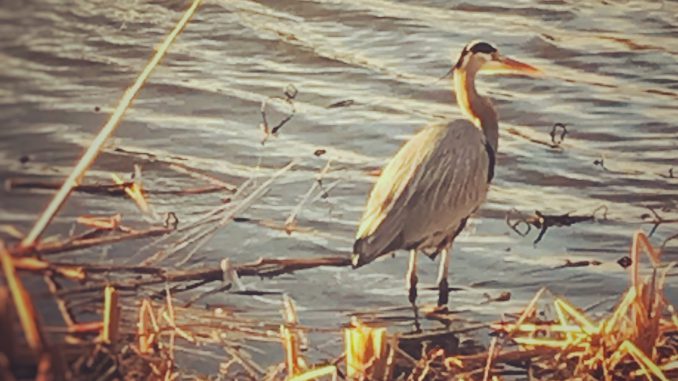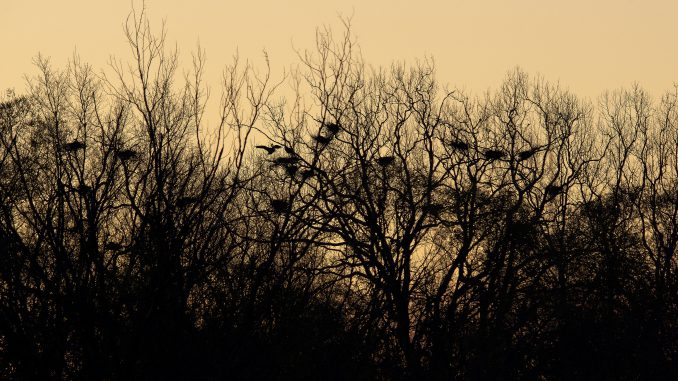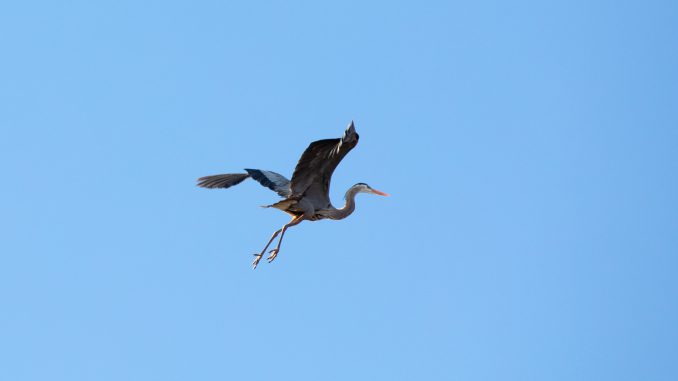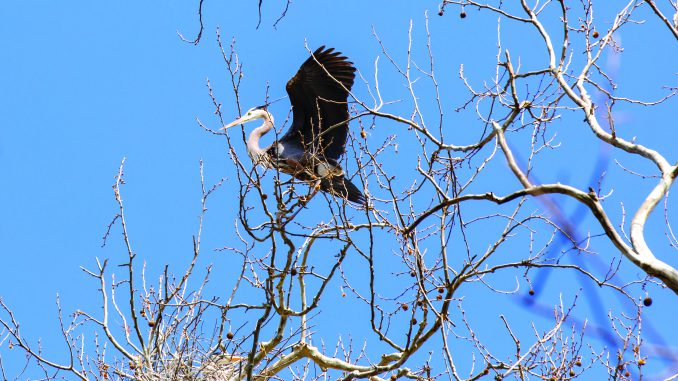
By Chris Wadsworth
Lots of people have Instagram accounts and fill them with photos of their trips, their families, even the food they eat. Ashburn Village resident Ryan Sholin has an “Insta” account, too. However, the married father of two specializes in a different type of image on his photo feed: snapshots of great blue herons.
“We’ve had our dog for four years now and I like to walk her around the lakes over in the village,” said Sholin, 42. “Inevitably — especially in the spring and fall — I start running into a bunch of great blue herons.”
Believe it or not — Ashburn is a hotbed for the majestic birds. In fact, one of Virginia’s largest great blue heron breeding areas — known as a rookery — is right here in Ashburn. It’s near the point where state Route 28 meets Route 7 along the Broad Run creek on the Kincora property.
“The rookery is strategically located near the Potomac River and its estuaries, so that’s where the herons are finding their food,” said Greg Butcher, the vice president of the Audubon Society of Northern Virginia. “They are going to be feeding at lots of places — all the parks in the area, all those golf courses along the river.”
We gathered some fascinating great blue heron facts from the Audubon Society and other sources and photos from a number of talented photographers in our area. See the full pictorial in the July/August print edition of Ashburn Magazine.
Great blue heron facts
Great blue herons can be found in almost every part of the United States, as well as much of Canada, Mexico and Central America and even the Caribbean. They like to live and breed near bodies of water, including swamps, marshes and the shorelines of lakes.
A colony of great blue herons can include more than 500 individual nests. Many trees will have multiple nests built in them, and they can be positioned more than 100 feet off the ground.
Its long, slim S-shaped neck is one of the great blue heron’s most distinguishing features, but it can sometimes cause problems. The birds swallow their prey whole, and if they try to swallow a fish that’s too large, they have been known to choke to death.
Great blue herons primarily eat fish. They wade along until they see one, then strike with lightning speed and spear it with their sharp beak. For this reason, people should be wary around herons — even when trying to help an injured one. The bird can seriously wound a person with a well-placed stab of the beak.
Besides fish, great blue herons have been known to eat other small animals, including insects, frogs, lizards, snakes, salamanders, crabs and even mice.
During mating season in spring and summer, great blue herons tend to stick to one partner for the entire season. The male brings sticks to the female, who builds a nest in a tree. Herons prefer dead trees but will make do with whatever is available.
Visitors to great blue heron colonies will often see elaborate courtship rituals as a male heron tries to attract a mate. This can be followed by bonding rituals between a male and female. These rituals can include greetings, the trading of sticks, displays of plumage and making a chattering sound with the tips of their bills.
Female great blue herons usually lay two to seven eggs. The eggs are pale blue in color, and both parents will take turns sitting on the nest and keeping the eggs warm. They will hatch after about 60 days. Great blue herons in the wild usually live around 15 years, but some have been known to pass 20 years or more.
With wingspans that can reach 6 feet or more, the great blue heron is a remarkable sight in the skies over Ashburn. On the ground, they stand up to 4½ feet tall. The great blue heron is the largest heron species in North America.



